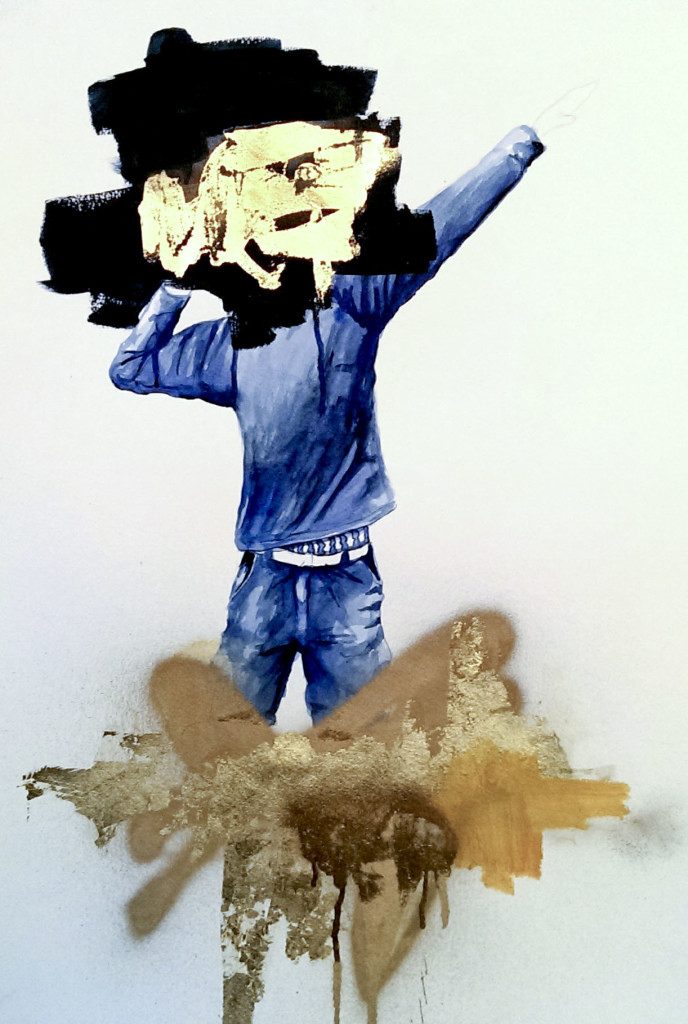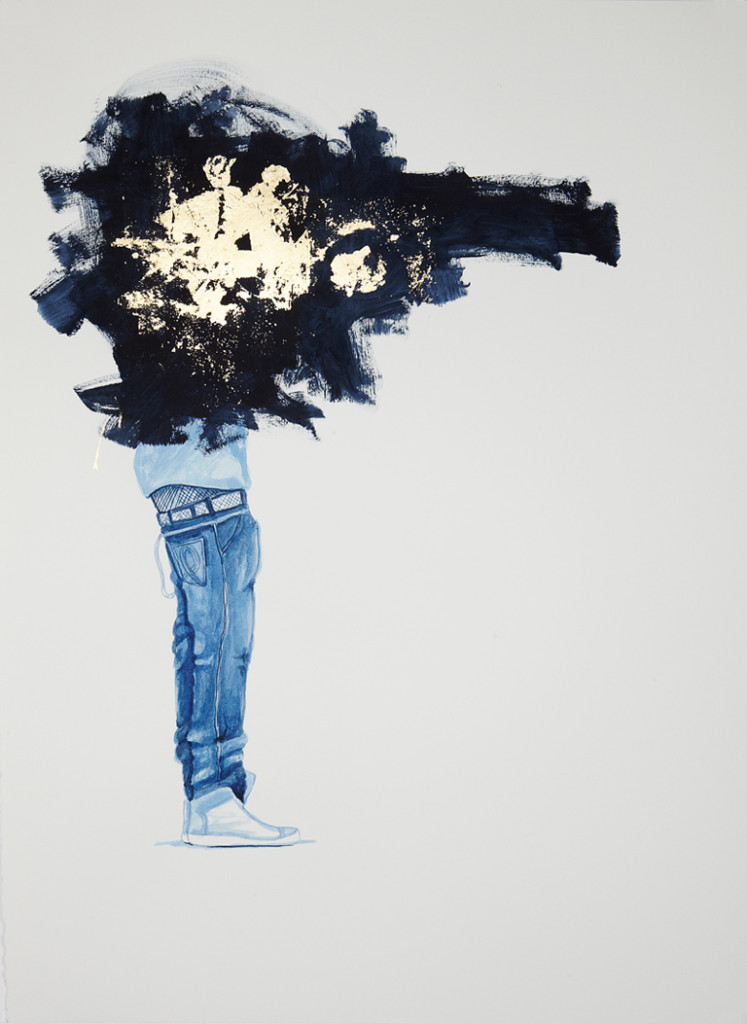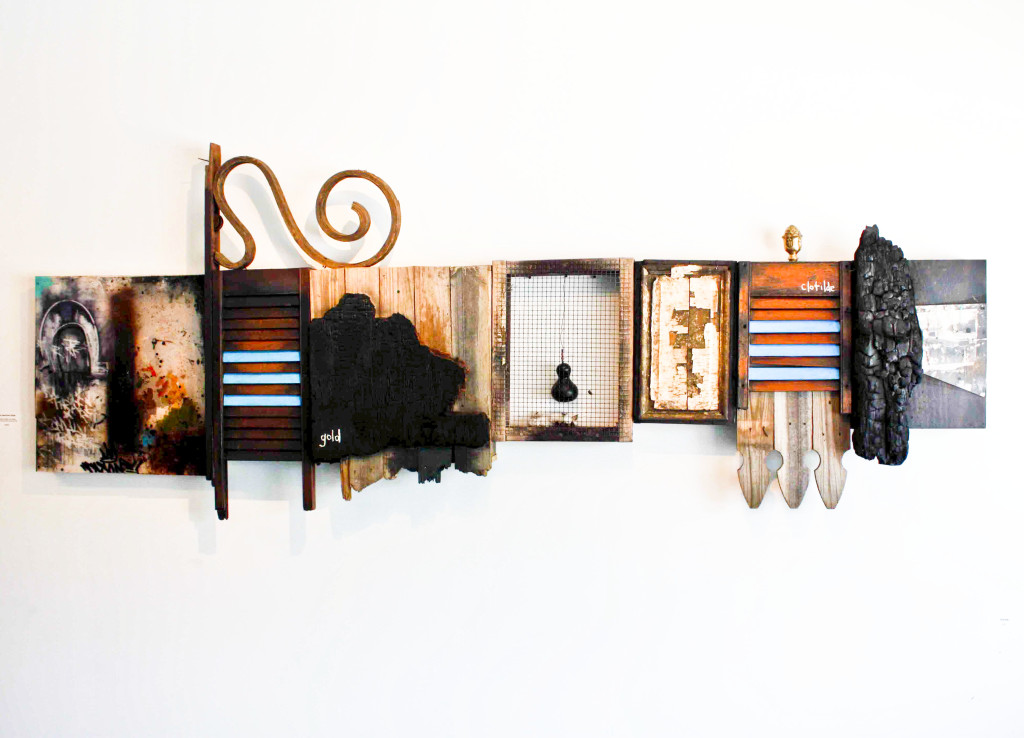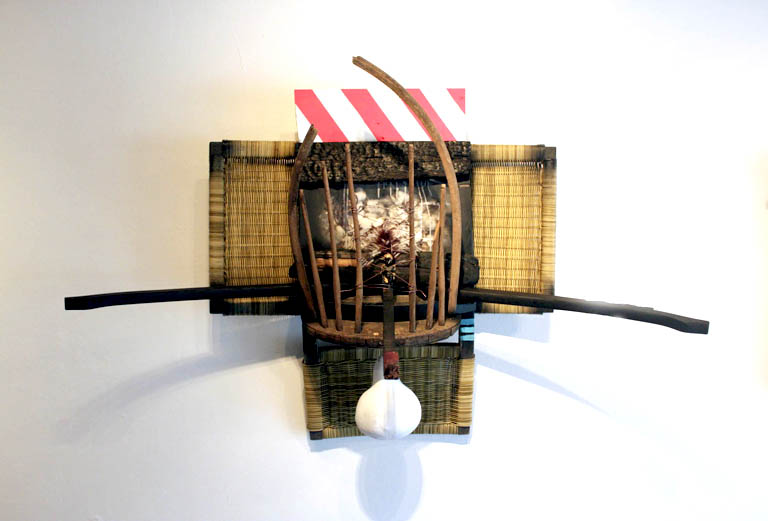 After moving to Atlanta with only the money he won after a less-than-honest gambling episode with a notorious Alabama gangster, artist Michi Meko hasn’t let an ounce of inspiration go unused. If he ever did, he’d have to answer to his mother about wasting his talent and, like most of us, the artist doesn’t want to disappoint Mom.
After moving to Atlanta with only the money he won after a less-than-honest gambling episode with a notorious Alabama gangster, artist Michi Meko hasn’t let an ounce of inspiration go unused. If he ever did, he’d have to answer to his mother about wasting his talent and, like most of us, the artist doesn’t want to disappoint Mom.
Since landing here, Meko has participated in numerous group and solo exhibitions in and outside of Atlanta; he’s also been involved with many local art events including Living Walls, FLUX, and Art on the BeltLine. Like each medium that he layers to create a completed audio or visual work, this artist believes every opportunity he has been given serves as a single piece of what will eventually create his life’s narrative.
Here, CommonCreativ talks with Meko about his journey as an artist, his recent work, and the unexpected people and places that often give him inspiration to create.
CommonCreativ: How did you get into making art?
Michi Meko: Art has always been there for me. It’s second nature; it’s like breathing. I can remember starting to draw in kindergarten. I would miss recess to draw on giant copy paper. It was on a Sunday when the preacher was preaching the Old Testament’s Parable of the Talents, and I asked my mom what a talent was. She said, “Well, you can draw, so God has given you that talent or gift.” So I’ve been determined not to bury my gifts. I promised her that one day the pencil would take me around the world, and it has. I continue to get opportunities because of the pencil, and I always work to not burying my talent. I won’t let the Universe have this thing back.
 CC: What sparked your desire to make
the move to Atlanta after living in Alabama?
CC: What sparked your desire to make
the move to Atlanta after living in Alabama?
MM: I moved to Atlanta chasing a dream to make it as an artist. I saw that as my path in life. It’s kinda like the Allegory of the Cave or a “man must go into the wilderness” kind of thing. Plus it was the closest big city from my town. I couldn’t see my life where I was in Alabama because my mother had always built me up about my talent. I couldn’t waste it. I had to make art. Basically, I moved to Atlanta just to see if it was possible to do.
CC: Your work ranges from street art and installation pieces to music and video. Which mediums do you like working with most?
MM: Mediums for me in many cases lack information. They can’t communicate the emotions of a project or idea the same. Sculpture and paintings communicate differently as well as sound. Nature and biomimicry projects perform on their own. In some ways I have a real issue with the history of “painting within the square.” Something inside me always wants to challenge the notion of the formal medium.
To me, making art exists within this linear narrative of history. Critics and people often line an artist up with an artist from history in order to make a linear connection on this timeline. To understand my works, one has to have the ability to hear all the parts (the beat, the emcee, the scratch, and the song) as one rhythm. But they also have to hear them singularly to make out the whole of the narrative. I want my works to read like a James Brown performance, which has nothing to do with the narratives of art history, but everything to do with my studio practice and approach to art making. There is a clip on YouTube of James singing “Say it Loud – I’m Black and I’m Proud” to a mostly white, blonde, female audience of women in 1968. The brothers in the back left and on the floor never miss a beat along with the silhouetted female Afro up front. The audience has to decide if they are going to say it loud because they are black and proud. It’s in these strange situations—the contradictions in these juxtapositions—that I layer mediums, meanings and narratives. It’s all at once where singulars make a whole.
I’m sure people think I’m scattered because I don’t work in a familiar series [or constant medium], but if one is really in to the narratives I’m working within then it’s an easy funk groove to follow. I’m working on that—trying to strip away the layers—but it’s not easy. I see mediums as just tools of the process of creating. I enjoy working with the ideas, because within ideas there are possibilities. Those unknown possibilities lead to exploration and pioneering original narratives.
CC: The themes of fighting and endurance are consistent throughout your work. Was this a conscious choice or something that happened naturally for you?
MM: I think it’s the narrative of my people. It ain’t been no crystal stair—that’s some Langston Hughes, ya feel me?! There is a real truth in this part of the story. I don’t have to bore you with art school theory. This ish is real in-your-face stuff. It’s a walking, living, breathing theory and history. I can look at my mother and father and question life. I can hear their narratives of segregation and Jim Crow and his white-only water fountains and sidewalks. I had an uncle escape the Klan in Birmingham, so fight and endurance is in my family history. When you look that in the eyes and it’s part of you, then you see a truth that directly affects you. In them I can see what it means to fight and endure, but it’s not just them—it’s anyone placed in the position of the other.
CC: Everyone fights battles within themselves. Whether recent or lifelong, what do you find to be a struggle for you?
MM: It’s all a struggle, every single part of it. I’m fighting that battle right now and I almost quit making work. Things are getting too close in styles, so I was just going to focus on my fishing for a year. The thing is, if we don’t have questions, fears or doubts, then we’re doing it wrong. What’s important is overcoming all the B.S. in order to continue on. Fear kills pursuit. Comfort kills pursuit. Pursuit does them both in. I learned that from my old neighbor and have kept using it as a life mantra. I’m not afraid to admit that I sometimes get shook. We are all humans here. Fear is a real emotion within the limbic systems of our brains.
CC: The cultural and historical icons presented in your video, Endurance, are very affecting. What was your process for deciding on the images and their placement within the video?
MM: The video is a snapshot within my thoughts. It’s one minute within my brain. The breathing audio is a Kraftwerk loop that I sampled. I’m interested in the limbic system and how it functions. This goes back to the fight and endurance themes or fight-or-flight emotions. The video’s scenes work in threes and fives, so every third and sometimes fifth flash is the start or stopping of a narrative. This goes back to the layering of James Brown and hip-hop—the idea of single flashes making a whole and complete story.
Endurance from MICHI MEKO on Vimeo.
The images are things that have influenced me or topics that keep occurring in my life. It’s part spirit and attitude—like a code that lets the viewer see a small glimpse inside my limbic system. It allows one a chance to try and process the things I’m dealing with. It also functions as a trigger that affects your breathing and rhythm, which goes into the mythical and magic HooDoo themes of Southern black spirituality.
CC: Most artists sometimes feel uninspired or hit a wall creatively. When this happens to you, what do you turn to for inspiration and motivation?
MM: I’ll give away a couple of secrets here: I play Serena Williams tennis matches as ambient noise—the ones without the announcers. She has a real fight and endurance narrative. It’s something in her court language that is all courage, power, rhythm and soul. l play Muhammad Ali fights. The Titus the Gorilla King documentary somehow pushes me forward when I’m down. Mostly I just go fishing. The Reel of Steel is my fishing crew, which I hope to eventually turn in to a business. I retreat to my garden and look to nature for the answers I seek a lot too. Wilderness has a way of putting things in to perspective. That goes back to the biomimicry part of my practice. Reading helps too. I seek to make new discoveries that might influence the next project.
CC: You’ve participated in a number of art events around Atlanta, including many public art programs. Any favorites that stick out?
MM: All of them. I’m really lucky. I work hard and I hope I can continue to grow, but I love all that Atlanta has afforded me to do so far. I can’t ever pick favorites. It’s all singulars that make my whole narrative. They all inform and influence the journey, or this wilderness I have thrust myself into. I’m really stoked when people call or invite me for projects. They’re all pursuits that help conquer fears.
CC: Art-related or not, where’s your favorite spot to spend time in Atlanta?
MM: Summer evenings on the Hooch, Striper fishing.
You can find more of Michi Meko’s work on his site.







